This article was co-authored by wikiHow Staff. Our trained team of editors and researchers validate articles for accuracy and comprehensiveness. wikiHow's Content Management Team carefully monitors the work from our editorial staff to ensure that each article is backed by trusted research and meets our high quality standards.
wikiHow marks an article as reader-approved once it receives enough positive feedback. This article received 14 testimonials and 82% of readers who voted found it helpful, earning it our reader-approved status.
This article has been viewed 2,923,477 times.
Learn more...
While skating on the ice seems intimidating, with the right equipment and a little patience, you can learn how to skate. Select the right material to make sure you'll be safe on the ice. Learn a few basic moves. Work on your technique. If you're dedicated to learning to figure skate, take classes.
Steps
How to Select the Right Materials
-
1Wear lighter clothes. When ice skating, wear clothes that are easy to move around in and will not get heavy when wet. Skating is exercise, so your body will get warmer once you move around, preventing you from getting cold on the ice. Go for a fitted top with leotards, tights, or leggings.[1]
- If you're skating in an outdoor rink, wear similar attire. However, you may want to choose slightly thicker fabrics or add layers. For example, wear a light tank top under a form-fitted sweater.
-
2Wear a fitted sweater or a light coat. As you won't be moving around as vigorously during beginner moves, go for a light jacket or coat. This should be an outfit easy to take on and off, in case you get sweaty, and light and moveable enough that it does not get in the way of your motions on the ice.[2]
- For example, a fitted sweater is a great choice for an ice-skating outfit.
Advertisement -
3Find skates that fit properly. Skates should be fitted for comfort and are available in most shoe sizes. When you first start ice skating, you can rent ice skates. This allows you to explore different brands and sizes to figure out what works for you. Go to a pro shop and get fitted there.[3]
-
4Put on socks or tights. To keep your feet warm, wear either skating tights or microfiber socks. It's important your feet are exposed to as little moisture as possible to keep you warm. Use either tights or microfiber cloths when skating.
- Do not wear cotton socks. These socks do not soak up moisture well and will leave your feet cold.
-
5Wear a helmet for your safety. This will prevent injuries to your head if you fall on the ice.
How to Master the Basics
-
1Practice falling. Falling is part of the sport so it's natural that this will happen. Falling with the right technique will keep you from getting injured. The first thing you should do is practice falling. To fall properly, do the following when you feel yourself losing your balance:[4]
- If you anticipate needing to fall, bend your knees and squat into a dip position.
- Fall sideways, leaning forward, and place your hands on your lap. As soon as you fall, roll over onto your hands and knees.
- One at a time, place your feet between your hands. Then, gently push yourself back up.
-
2Learn to stop. Once you're comfortable skating around the rink doing swizzles, gliding, and stroking, you need to know how to stop. Stand together with your feet together. Push your feet apart while skating and stick one skate out sideways. This will push some frost off of the ice and cause your body to come to a stop. The motion is similar to skiing.[5]
-
3Do some basic gliding. Gliding is a form of marching on the ice that will help you transition into skating. March forward two steps and let your body glide forward slightly. Do this until you feel comfortable with it. Then, begin picking up one foot as you glide.
- In figure skating, you alternate between lifting one foot and another. Gliding helps you become comfortable with that feeling.
-
4Try stroking. Stroking is the same as gliding except you extend the motion longer. After marching, lift one foot as you glide, set that foot down, and lift the other. This is the foundation for basic skating. Repeat the process until you feel comfortable.
-
5Do swizzles. After getting yourself gliding, place your heels together. Then, slide your feet apart. After this, point your toes together. Repeat this motion, leaving a trail in the ice that resembles an hourglass.[6]
- Swizzles help you go through the general motions of skating but keep your feet on the ice.
- Keep practicing swizzles until you feel completely comfortable with the move. Eventually, you can start lifting your skates off the ice in alternating patterns as you skate.
How to Use the Right Technique
-
1Warm up first. You should do a quick warm up before skating. This will help prevent you from becoming sore while on the ice and, as your body may not be used to the cold. At first, cramps may be more frequent due to the weather. Simply stretch each leg over the barriers at the rink to warm up before skating.[7]
-
2Do not look down. At first, you may be inclined to look down at your legs to make sure you're going through the right motions. This will not actually help you skate better and can actually cause accidents. Make sure to keep your head up so you do not collide with anyone on the ice.[8]
-
3Lean forward while you skate. Always lean forward slightly when skating. Bend your knees and keep your weight forward. Leaning back can cause you to fall backward onto the ice.[9]
-
4Practice frequently. Ice skating is difficult and takes years of practice. While you may feel overwhelmed at first, practice a few times a week. You'll eventually get the hang of figure skating.
- It's hard to judge your own technique as you cannot observe yourself. See if you can find professional lessons in your area in your price range. You can look online or look for flyers in your local rink.[10]
Community Q&A
-
QuestionWhen I first got on the ice, I had an anxiety attack. What would help?
 Community AnswerTry going with a friend or family member who is confident with ice skating and can help you along.
Community AnswerTry going with a friend or family member who is confident with ice skating and can help you along. -
QuestionWill you forget ice skating if you haven't done it for a long time or will you remember everything?
 Community AnswerIf you haven't skated in a while, it can take a while to get back into it, but over time, your muscle memory will kick in, if nothing else. It can be tricky at first, but you'll find that you'll get the action happening with greater ease than your first time skating. The more you've skated in the past, the more you'll most likely remember - If you have lots of experience with it, the faster it will come back.
Community AnswerIf you haven't skated in a while, it can take a while to get back into it, but over time, your muscle memory will kick in, if nothing else. It can be tricky at first, but you'll find that you'll get the action happening with greater ease than your first time skating. The more you've skated in the past, the more you'll most likely remember - If you have lots of experience with it, the faster it will come back. -
QuestionHow do I turn on the ice?
 Community AnswerYou stop slowly, then twist your body to the direction you want to go. Push off with your leading skate in the direction you want to go, then glide there.
Community AnswerYou stop slowly, then twist your body to the direction you want to go. Push off with your leading skate in the direction you want to go, then glide there.
Warnings
- Be mindful of other skaters in the rink.⧼thumbs_response⧽
Things You'll Need
- Skates
- Rink
- Outdoor Clothes
References
- ↑ https://www.marieclaire.com.au/what-to-wear-ice-skating
- ↑ https://www.marieclaire.com.au/what-to-wear-ice-skating
- ↑ https://www.thoughtco.com/step-by-step-beginning-ice-skating-lesson-1282381
- ↑ https://www.thoughtco.com/step-by-step-beginning-ice-skating-lesson-1282381
- ↑ https://www.thoughtco.com/step-by-step-beginning-ice-skating-lesson-1282381
- ↑ https://www.youtube.com/watch?v=ZuwzmityB7I
- ↑ https://www.realbuzz.com/articles-interests/sports-activities/article/top-10-ice-skating-tips-for-beginners/
- ↑ https://www.realbuzz.com/articles-interests/sports-activities/article/top-10-ice-skating-tips-for-beginners/
- ↑ https://www.realbuzz.com/articles-interests/sports-activities/article/top-10-ice-skating-tips-for-beginners/
About This Article
To have a successful first time ice skating, dress for the occasion by wearing long sleeves and pants and light layers, like a jacket, gloves, and a hat. Bring a couple pairs of socks in case your feet get cold, and make sure the ice skates you rent fit your feet so they’re comfortable and don’t cause blisters. Once you’re suited up, carefully step onto the ice, holding onto the railing for support. Keep your knees slightly bent at all times for extra stability. To start skating, push off with one foot. As you glide forward, bring the foot you pushed off with back down onto the ice, then use your other foot to push off. Continue alternating feet to keep skating forward, and hold your arms out to your sides a little bit to help you balance. Keep your eyes ahead of you and avoid looking down so you don’t fall or run into anyone. To turn, just bring your outside shoulder, or the shoulder that's opposite the direction you want to turn, forward. If you want to turn left, bring your right shoulder forward. To turn right, bring your left shoulder forward. To stop skating, move your feet away from each other, then turn one of your skates to the side. If you ever feel like you’re going to fall, bend your knees more and try to sit down on the ice for a gentle landing. Try to stay loose when you’re falling so you’re less likely to hurt yourself. Keep in mind that falling is totally normal when you’re new to ice skating. The more you practice ice skating, the easier it will be! Read on to learn more about the proper equipment you’ll need to ice skate!

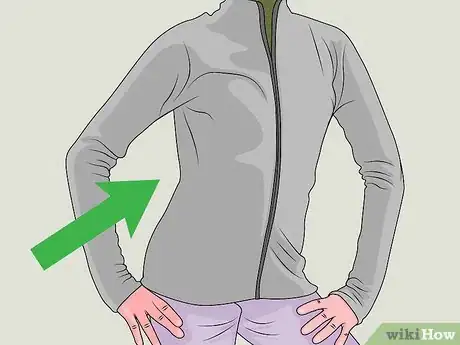
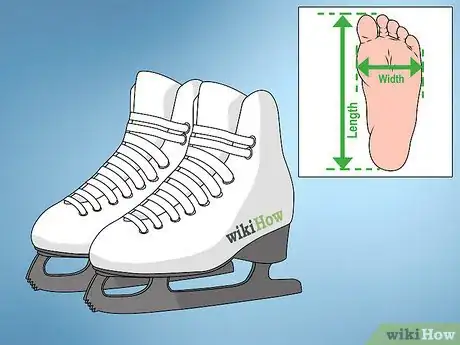
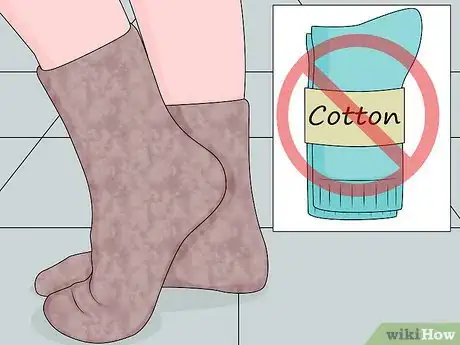
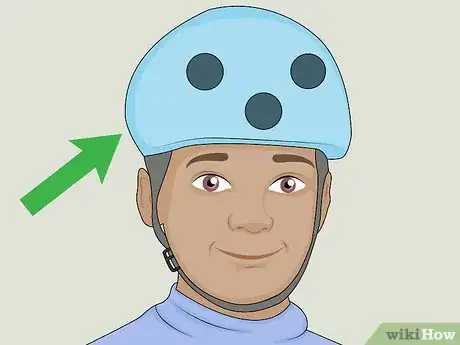

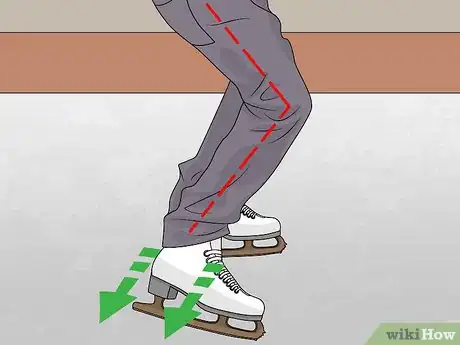
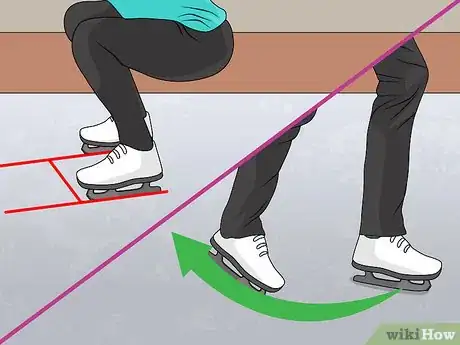
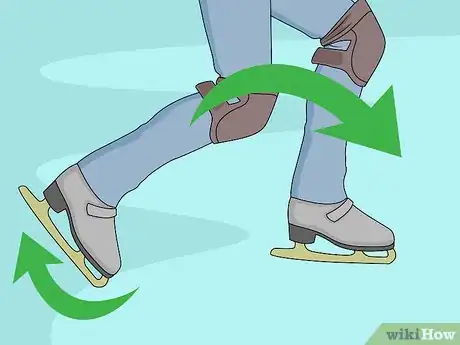
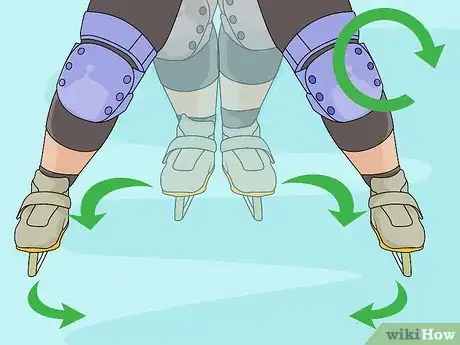
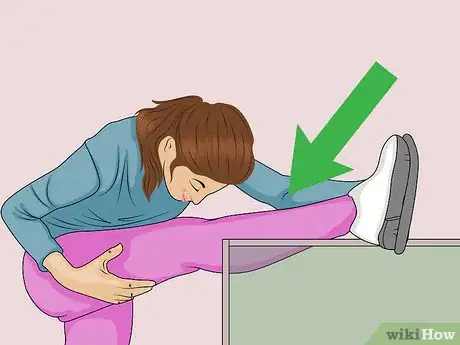
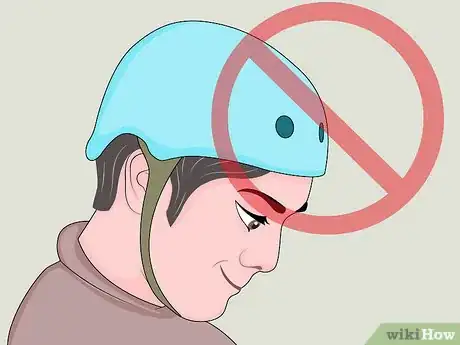
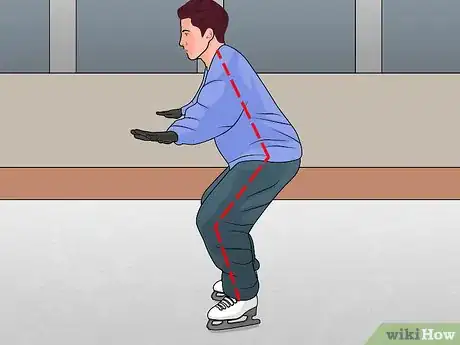
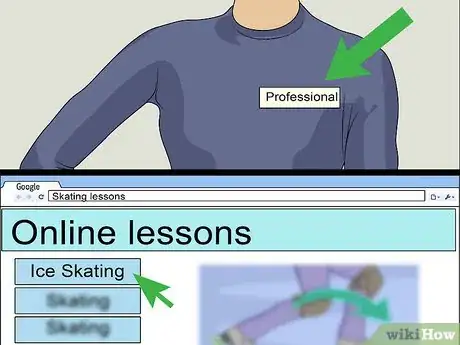
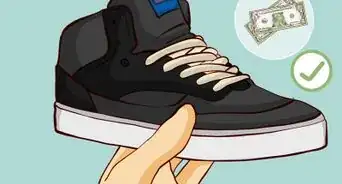
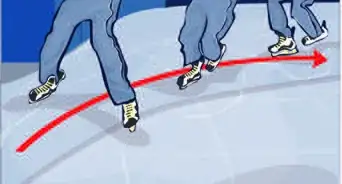

-Step-14.webp)
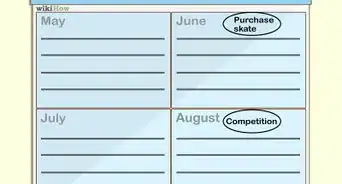

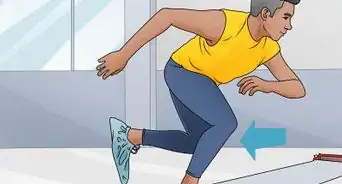
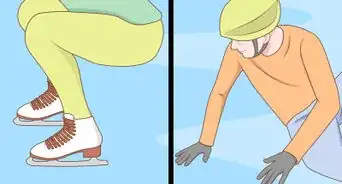
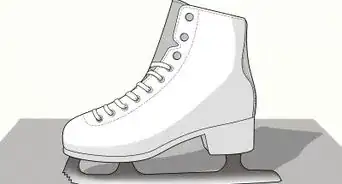
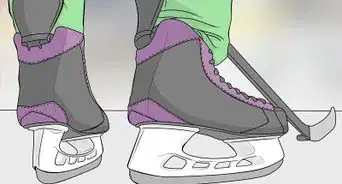
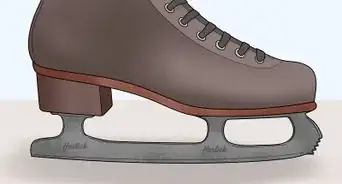












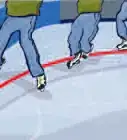
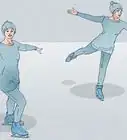
-Step-14.webp)



































